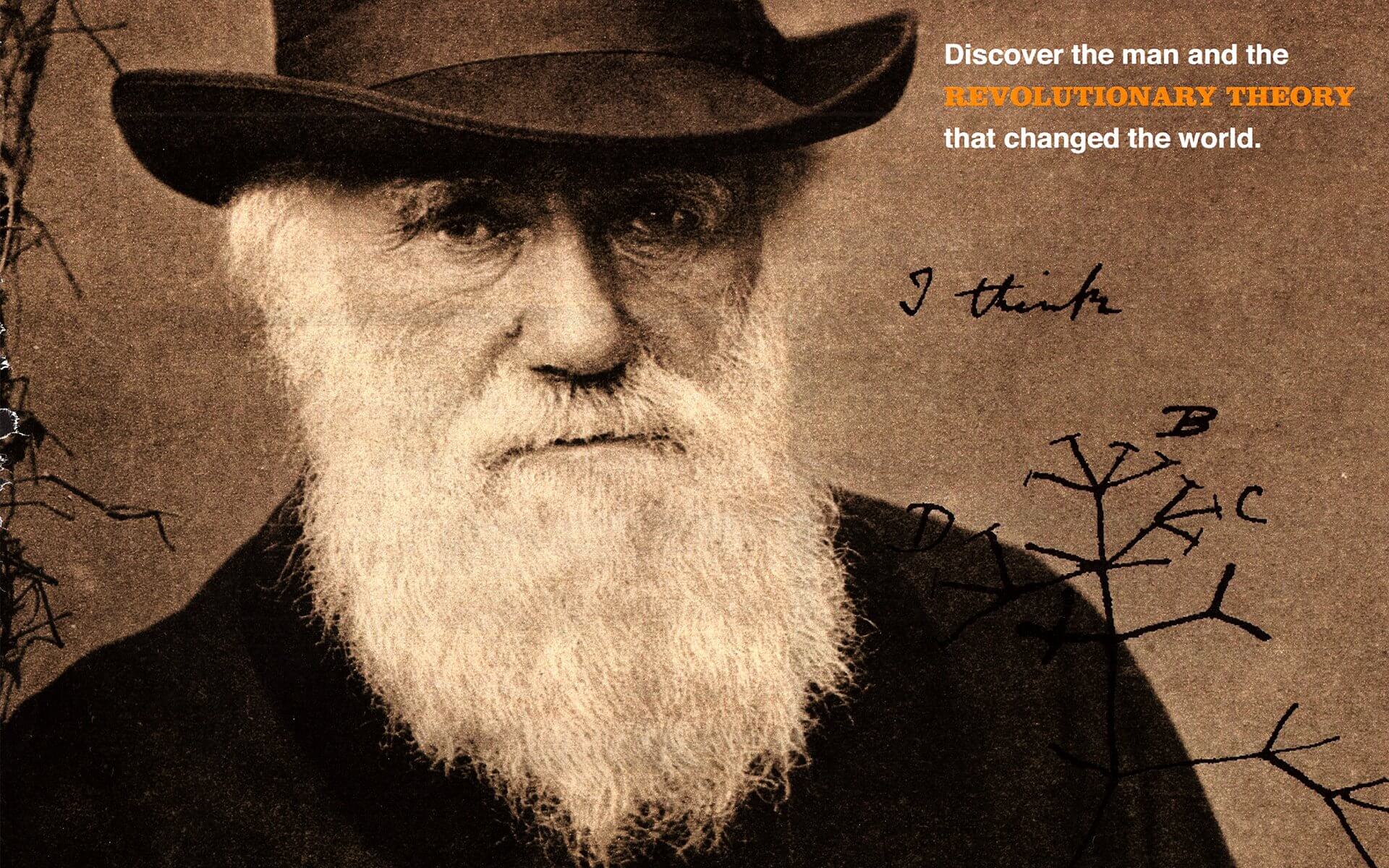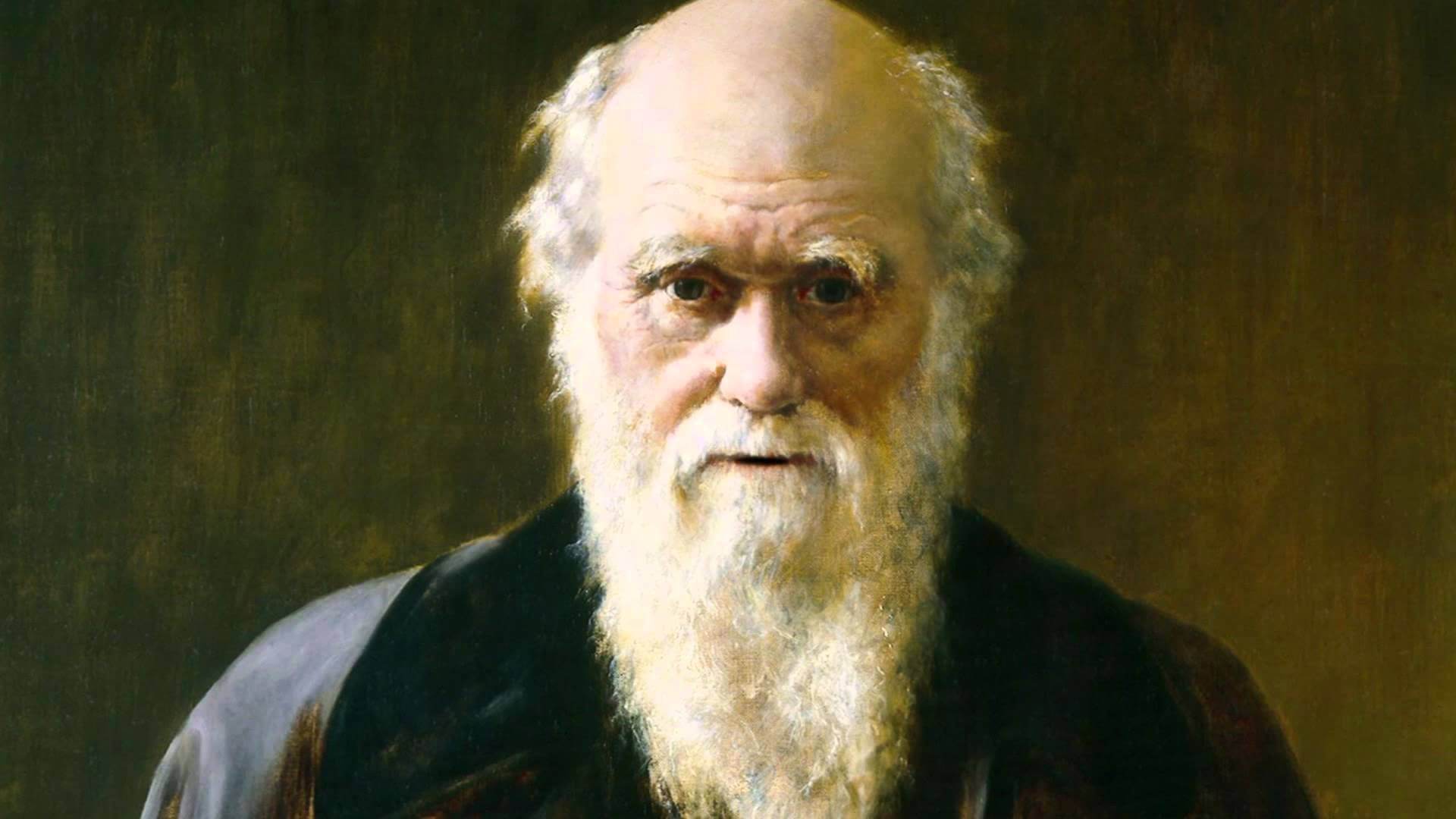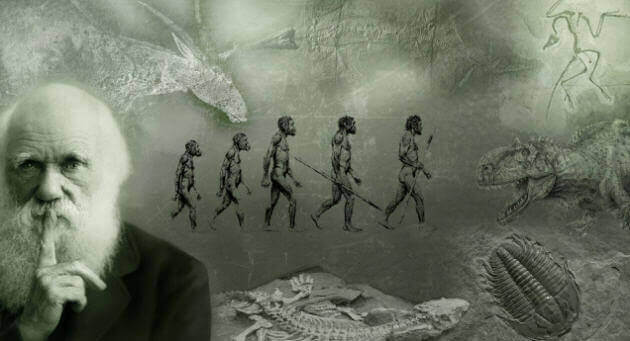What did Charles Darwin do? What are the works, contributions to science of Charles Darwin? Information on Darwin’s idea of evolution.

Voyage of the “Beagle.” The Royal Navy’s H. M. S. Beagle sailed from Devonport, England, on Dec. 27, 1831, under the command of Capt. Robert FitzRoy. The purpose of the trip was to survey the coasts of Patagonia, Tierra del Fuego, Chile, and Peru, to visit some Pacific islands, and to establish a chain of chronometrical stations around the world. Darwin’s duties as official naturalist on the voyage were to study the rocks and life of the places visited and to collect specimens.
The voyage lasted five years and entailed considerable danger. On one occasion the ship floundered when trying unsuccessfuly to round Cape Horn, and hostile Indians often posed a threat to journeys ashore. Tropical insects and diseases also presented a medical problem.
Geological Observations.
Darwin’s first geological observations were on the structure of the Cape Verde Islands. He was able to unravel the past history of Sao Tiago Island and to show evidence indicating the past elevations and subsequent subsidence of the island. In Argentina, Darwin’s observations of rock strata enabled him to interpret correctly certain previously misunderstood features of the way sedimentary rocks crystallize when they are metamorphosed by the pressure of overlying rock.
Chile provided Darwin with the opportunity of experiencing and noting the effects of earthquakes and volcanic eruptions in raising the level of the ground. In the Andes, he found evidence that strata had been uplifted several thousand feet, while in other areas, he found evidence of subsidence.
Darwin’s observations of geological elevations and subsidences led him to propose a theory, now generally accepted, that explains how coral reefs are tormed. it was well known that there are many ring-shaped coral islands, called atolls, in warm tropical seas, and there was reason to believe that these coral reefs had grown on the tops of submerged mountains, Darwin found this puzzling, since he knew that coral animals cannot live below a depth of 120 feet (37 meters), and it seemed unlikely that so many mountains would have happened to have their summits within the narrow range between sea level and a depth of 120 feet (37 meters).
As a solution to the puzzle, Darwin proposed that many of the oceanic mountains that now form platforms for coral reefs had originally been raised high above their present altitudes and had then slowly sunk below the sea when the ocean floor subsided. While the island peaks protruded above the sea, fringing coral reefs (like those seen around many tropical islands today) formed along their shores. As the peaks sank and the bases of the reefs were submerged to depths below 120 feet (37 meters), the coral animals in the lower parts of the reef died, but their skeletons provided a firm platform that enabled the reefs to continue to grow upward to sea level, even though the peaks of some of the mountains eventually sank far below 120 feet.

Biological Observations.
When Darwin started on the voyage of the Beagle, he had no reason to doubt the prevalent view that species of animals and plants were immutable and the result of divine creation. However, his observations on the natural history of the places he visited shook and finally overthrew this belief.
First, Darwin found fossils of extinct animals whose basic skeletal structure was the same as that of living animals. For example, he found fossils of extinct giant sloths that were similar in skeletal structure to living sloths in South America. Secondly, while searching for distinctions between species in the light of physical and climatic barriers between the ranges of the species, he found that different yet clearly related species occupied adjacent areas of a continent. For example, he noticed that South American rodent» were all built on the same body plan, different from the plan of North American or European rodents. Thirdly, Darwin found that inhabitants of oceanic islands generally resemble the inhabitants of the nearest continents. For example, species found on the Cape Verde Islands resemble those found in Africa, while species of the Galápagos Islands resemble those of South America. These observations led Darwin to wonder why—if species were created separately—such similar species happened to be created in successive time periods or in adjacent geographical areas.
The Galápagos Islands presented a particularly interesting study for Darwin. Each small island of the group has its own characteristic species of bird, lizard, or tortoise. Darwin wondered why—if each species had been created— the “creative power” had been so extraordinarily active just there. Further, since the physical and climatic conditions on all the Galápagos Islands are so similar, the differences between species could not be correlated with physical and climatic differences.
Darwin did find, however, that the differences between species could be correlated with the feeding habits of the various species. For example, some ground finches with powerful beaks eat large seeds, while others with smaller beaks eat small seeds, and still others with fine beaks eat insects. These discoveries were the germ of the idea that differences between species originate from the fact that each species adapts to the conditions of a different environment. Thus it gradually became clear to Darwin that adaptation was a subject for scientific study and was not the manifestation of a divinely guided design. In introducing the scientific study of adaptation, Darwin may be considered a founder of ecology.
On the return journey of the Beagle, Darwin wrote, “When I recollect the fact, that from the form of the body, shape of scale, and general size, the Spaniards can at once pronounce from which Island any tortoise may have been brought; when I see these Islands in sight of each other and possessed of but a scanty stock of animals, tenanted by these birds [the finches of Galápagos]but slightly differing in structure and filling the same place in Nature, I must suspect that they are only varieties … If there is the slightest foundation for these remarks, the Zoology of the Archipelagoes will be well worth examining; for such facts would undermine the stability of species.”
The Idea of Evolution.
H. M. S. Beagle landed at Falmouth, England, on Oct. 2, 1836. Darwin immediately began to study and report his findings. The Journal of Researches, in which he describes the voyage, is one of the best books of travel ever written.
The idea of evolution—that species change with the passage of time—had been discussed sporadically before Darwin began to formulate his ideas. For example, Darwin’s grandfather Erasmus had mentioned the idea and the French biologist Lamarck had around 1809 presented his thesis that bodily characterististics acquired as a result of the use or disuse of body organs could be transmitted by heredity; the accumulation of such inherited modifications might gradually change an entire species. Other naturalists were also becoming dissatisfied with the idea of the immutability of species. In addition, some philosophers were leaning in their social theories toward the idea of evolution. Evolutionary ideas were thus “in the air.”
In July 1837, Darwin started writing his Notebooks on the Transmutation of Species. Some of his thoughts were very simple but significant; for example, he wrote, “Seeing a dog, horse, and man yawn makes one feel how all animals are built on one structure.” The facts of comparative anatomy, embryology, abortive organs, instincts, systematica, paleontology, and geographical distribution all led Darwin inexorably to the conclusion that evolution was a fact and that species originate by descent, with modifications, from other species.
Darwin saw that it would be useless to proclaim that evolution had occurred unless he could explain how it had occurred. He knew from the cultivation of plants and the domestication of animals that selection of parents is the key to producing desired modifications in offspring. Evidence that less-well-adapted species became extinct while well-adapted species left more offspring had convinced Darwin that selection did work in nature, but he wondered how it worked.
Darwin’s questions were partially answered on Sept. 28, 1838, when he read in Malthus’ Essay on the Principle of Population that “population when unchecked goes on doubling itself every twenty-five years.” Malthus’ theory dealt with mankind and argued that since food supply did not increase as fast as populations, restraint of the birthrate was necessary to prevent unnecessary misery and death among the poor. Although Malthus’ arguments were unsound when applied to man, Darwin immediately saw that they could be applied to animals, which cannot increase their food supply, and that they explained the inevitable mortality of the less well adapted.
Darwin wrote, “There is a force like a hundred thousand wedges trying to force every kind of adapted structure into the gaps in the economy of nature, or rather forming gaps by thrusting out weaker ones.” In these words, he formulated his theory of evolution by natural selection.
In 1842, Darwin wrote a brief sketch of his theory. Two years later, he expanded it into an essay and showed it to the botanist Joseph Dalton but to no one else. Darwin then began working out all the known species of living and fossil barnacles, a task that he completed in 1854, when he returned to his “species work.” The geologist Sir Charles Lyell knew of Darwin’s species work in a general way and urged Darwin to write it up in detail, but Darwin hesitated.
On May 14, 1856, Darwin finally began to write his theory concerning species. On June 18, 1858, he received a letter from Alfred Russel Wallace, then in the Malay Archipelago. The letter contained a succinct but perfect summary of the theory of evolution by natural selection, which Wallace had worked out for himself. Darwin was terribly upset since the theory was identical to that which he had long thought but had neglected to publish. Since they knew of Darwin’s earlier work, Lyell and Sir Joseph Hooker arranged the reading of a joint paper by Darwin and Wallace to the Linnaean Society of London on July 1, 1858. The paper, published Aug. 20, 1858, passed almost unnoticed.
“On the Origin of Species.”
Darwin then set about writing what he called an “abstract” of his theories. This abstract, entitled On the Origin of Species, was published on Nov. 24, 1859. It sold out immediately. It was followed by five more editions in Darwin’s lifetime, and it was translated into many languages.
The book had the effect of a bomb. It provided reasons why the old idea of special creation of species was untenable and showed that evolution could explain the diversity of living beings on earth. The greatest impact was made by the book’s argument that natural selection— the mechanism of evolution—worked automatically, leaving little or no room for divine guidance or design. Its influence spread beyond biology to all aspects of human thought.
In the Origin, Darwin presented an explanation of the workings of natural selection, which involves the following stages:
- (1) All species produce more germ cells, pollen, or spores than ever reach maturity.
- (2) The number of individuals in a species remains fairly constant.
- (3) There must be a high rate of mortality since more young are produced than ever reach maturity.
- (4) The individuals of a species are not all identical but show variation.
- (5) Some variations are better adapted than others to fit into the ecological niches in nature.
- (6) The better-adapted variations will have a better chance of surviving and producing offspring than will the less-well-adapted variants.
- (7) Offspring resemble parents by heredity.
- (8) Therefore each successive generation will tend to have an increased proportion of better-adapted variations until finally the population consists only of the better adapted, and the less well adapted will have been entirely “eliminated.”
The gradual accumulation of adaptations may result in the formation of new species when a population splits into two portions isolated from each other. Each portion then becomes genetically different as a result of its adaptation to its particular environment. Such genetic differences eventually become so great that fertile interbreeding between the two portions can no longer take place, and they have thus become two distinct species.
The evidence that Darwin presented to substantiate his theory was indirect. He wrote, “I am actually weary of telling people that I do not pretend to adduce [direct]evidence of one species changing into another, but I believe that this view is in the main correct, because so many phenomena can thus be grouped and explained.” His argument was that if evolution had occurred, it is understandable that vertebrates, descended from a common ancestor, are built on the same plan, start their development in the same way, have similarities in behavior, and that fossils become more developed at higher levels of the geological record. Darwin’s method was the method of hypothesis. Direct evidence of evolution by natural selection was obtained 50 years after Darwin’s death by such biologists as Sir Ronald Fisher, George Gaylord Simpson, Theodosius Dobzhansky, Edmund Brisco Ford, and H. B. D. Kettdewell.

Reception of the “Origin.”
The reception of the Origin of Species was stormy. The book’s demonstration that plants and animals had evolved constituted a blow to orthodox theological opinion, for it replaced the divine creation of species by a natural process and implied that man was not unique but was similar to other animals.
Among biologists, the Origin also received a mixed reception. Some biologists, such as Thomas Henry Huxley and Hooker, quickly saw the unanswerable force of Darwin’s demonstration and became his avid supporters. A sprinkling of zoologists, botanists, and physiologists, men of open minds, followed them. Some biologists, however, opposed the views set forth by Darwin and Wallace.
Geologists were in a difficult position in reacting to the Origin because for many years geology had been considered the handmaiden of theology and had been expected to provide evidence of the truth of the story of the Biblical flood and of Bishop Ussher’s chronology based on the Bible. This partially explains why two famous geologists, Adam Sedgwick in England and Louis Agassiz in the United States, bitterly opposed Darwin.
The reaction to the Origin also varied from country to country. In Britain the general public was in a state of confusion. Most people accepted a supernatural explanation for the origin of species; a few were conscious of the inadequacy of the Mosaic revelation but were disturbed by evolution because of its implications for man. In general, the theories contained in the Origin of Species gained acceptance outside of England. In the United States, the theories were supported by Asa Gray and Chauneey Wright, in Germany by Ernst Haeckel, and in Russia by Aleksandr Kovalevsky and filie Metchnikoff. In France, however, opposition to Darwin’s views was tenacious.
Other Work.
Many of Darwin’s later books expanded the discussion of topics mentioned in the Origin. First among these was The Variation of Animals and Plants Under Domestication (1868), still a standard work. His Descent of Man, and Selection in Relation to Sex (1871) gave evidence from comparative anatomy, embryology, and behavior for deriving man’s body and mind from animals that, if alive today, would be classified as apes, and for the part played by selective mating in bringing about evolution according to sexual preferences. The Expression of the Emotions in Man and Animals (1872) showed the similarities between animals and man in the expression of emotions and was the start of the science of ethology.
The remainder of Darwin’s books deal with plants, which he was always pleased to “promote” from their lowly station compared with animals. In On the Various Contrivances by Which British and Foreign Orchids Are Fertilized by Insects (1862), Darwin showed the beautiful and intricate adaptations that these flowers evolved for the function of ensuring cross-pollination, and he correlated the evolution of flowering plants in the Mesozoic Age with the evolution of insects capable of performing cross-pollination. In The Effects of Cross and Self Fertilization in the Vegetable Kingdom (1876), he proved that cross-fertilized plants are more vigorous and set more seed than do self-fertilized plants.
In Insectivorous Plants (1875), Darwin astonished the world by demonstrating that a plant— the sundew—catches, ingests, and digests flies. In Climbing Plants (1875) and The Power of Movement in Plants (1880), Darwin showed that plants that can climb have an advantage over other plants because they can rapidly reach a height where their leaves are exposed to sunlight, and they thus do not spend time and physiological energy in building a tree trunk. Darwin also showed how light influenced the direction of growth in a plant, thus initiating the study of growth hormones in plants. His last book showed the importance of worms in maintaining the fertility of soil.
mavi